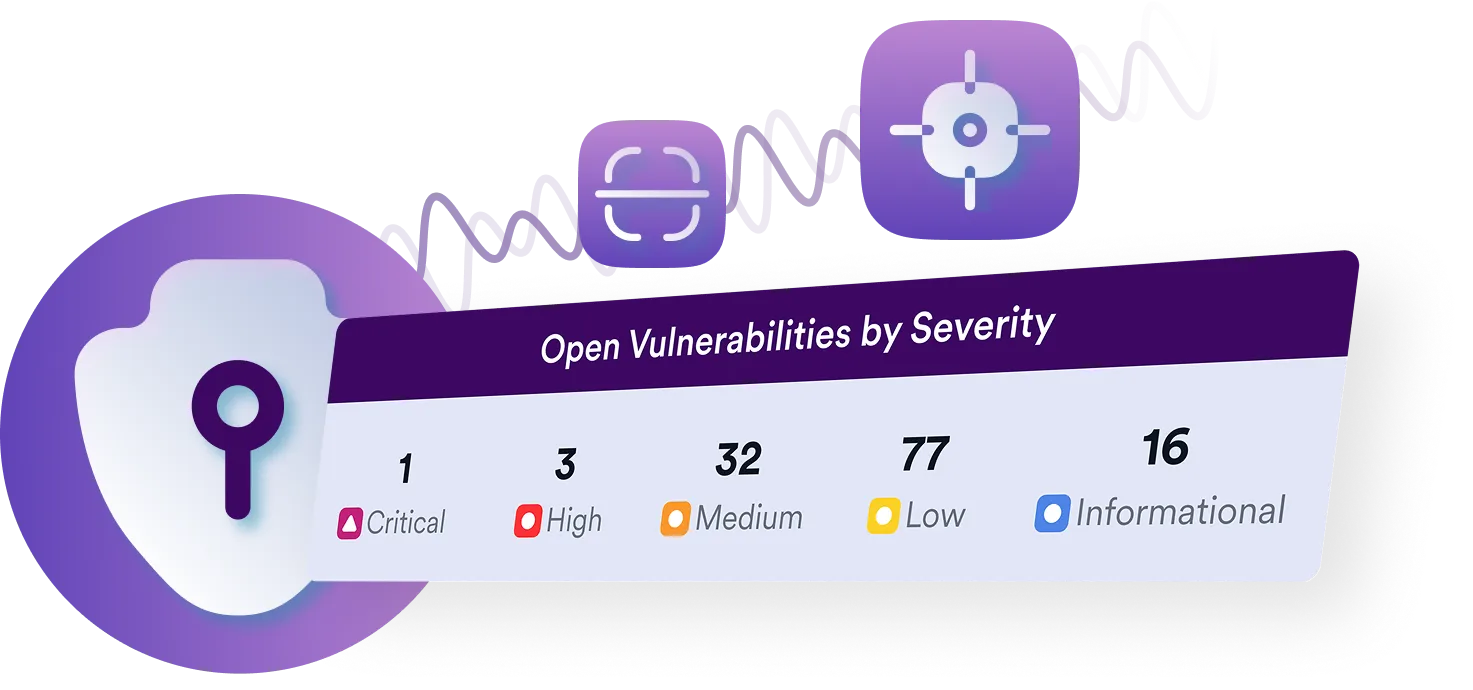Full visibility, smarter workflows, stronger container security
Invicti integrates container scanning with SCA, DAST, and CI/CD workflows so you can track vulnerabilities across registries and clusters, cut through complexity, and prioritize container risk in one unified view.


3600+ Top Organizations Trust Invicti



















The problem with legacy container security
Containers power modern apps, but legacy scanning leaves teams blind to what’s inside, bogged down in complexity, and chasing noise. Critical risks slip through while time gets wasted.
Hidden risks
Web app vulnerabilities and open-source flaws often get buried within container images. Frequent updates and redeployments make it hard to know what’s exploitable.
Manual processes
Registries, Kubernetes clusters, and fast-changing deployments make container environments highly complex. Ad hoc scans and spreadsheet tracking can’t keep up.
No prioritization
Traditional container scanning produces static SCA lists. But without correlation to runtime exploitability and risk posture, teams waste cycles fixing low-priority issues.
Complete container visibility
Invicti correlates container vulnerabilities with your entire AppSec program so you can focus on what matters most.

Simplified scanning
Invicti streamlines container testing so you can cover dynamic environments without slowing development.

Unified risk posture for containers
Invicti correlates container vulnerabilities with your entire AppSec program so you can focus on what matters most.

Frequently asked container security questions
Yes. Invicti container security (powered by Mend) integrates directly into CI/CD pipelines such as Jenkins, GitLab, GitHub Actions, and Azure DevOps. Scans can be triggered automatically as part of the build process, with results fed into issue trackers like Jira or Azure Boards. You can also enforce policies (e.g., block a build if a vulnerable component is found) and route findings to the right team automatically.
Invicti scans for vulnerabilities inside container images, including outdated packages, open-source dependencies, and exposed secrets. Dynamic SCA within DAST identifies vulnerable components actually used at runtime, while static analysis and SBOM support cover declared dependencies that might not be running. This combination ensures visibility into both runtime risks and dormant vulnerabilities, helping explain gaps between traditional scans and pen tests.
Yes. Invicti Container Security (powered by Mend) supports CycloneDX and SPDX SBOMs for container images, giving teams audit-ready documentation for compliance and supply chain security.
Yes. Invicti provides full API access allowing you to script, automate, and integrate container scans into your workflows. We also offer two-way integrations with collaboration tools like Slack, Teams, Jira, and GitHub ensuring scan results flow seamlessly into developer workflows.
Yes. The platform supports parallel and recurring scans across multiple targets, including containerized workloads. This allows AppSec teams to keep up with frequent container deployments without bottlenecks. ASPM adds scheduling, policy-based triggers, and reporting to make recurring scans predictable and efficient.
Yes. The platform flags license issues in containerized open-source components to help meet compliance requirements.
Yes. Containers can be scanned both at the registry and cluster level, with Kubernetes integration for runtime visibility.
See inside every container, cut through complexity, and prioritize what matters.





